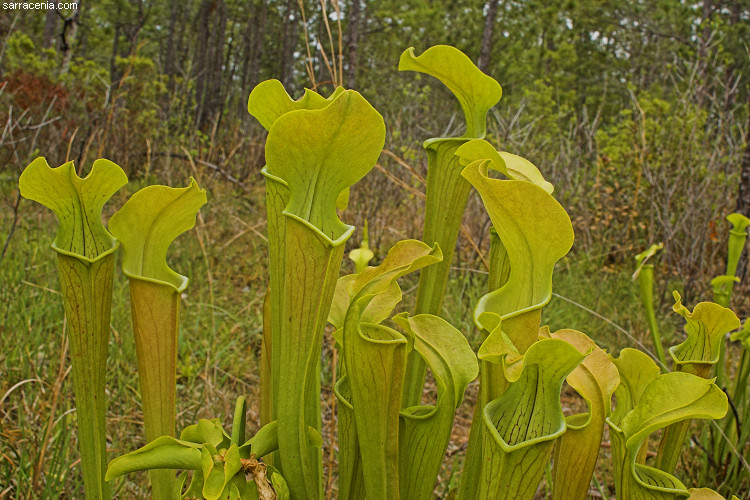
Closer view:
The subtle wash of pigmentation on the plants reinforces the similarity to
S. rubra subsp. wherryi, don't you think? Hell, if I saw this plant in a collection labelled
"Sarracenia alabamensis subsp. subsp. alabamensis"
I wouldn't blink! Of course, when it flowered yellow or cream, one would instantly
realize it was not a member of the S. rubra/S. alabamensis group, but out of flower this could be a
confounding plant.
So many horticulturists discount Sarracenia alata as a boring species.
Yet there is tremendous diversity in form and color in the species!
This remarkable clone really got me to thinking about the differences between S. rubra and S. alata, and
also the differences between S. flava and S. oreophila. The oft-cited differences in morphology
between these pairs of species are not always very large. There are many plants which seem to bridge the gap.
Then I started thinking about Sarracenia purpurea subsp. venosa var. burkii.
Those who support including this taxon within the description of Sarracenia purpurea concede that while
the burkii
plants are different from typical S. purpurea subsp. venosa, the differences are not as extreme as the ones
separating S. flava from S. oreophila, or S. rubra from S. alata. And I agreed with this
perspective. Yet I've been seeing wild populations of these latter four species with so many weird intermediate plants that I
am not so impressed with their differences anymore. I'm not so resistant to the notion of referring to
the burkii as S. rosea anymore, and in fact have adopted the usage of the new name.
Yes, you could with equal validity use these observations to say that the species are extremely polymorphic, and that
it shows that the burkii plants should clearly be retained within S. p. subsp. venosa. However,
I'm leaning in the other direction.
Interesting, what strange ideas you can adopt with the hot Texas sun beating down on your brain.